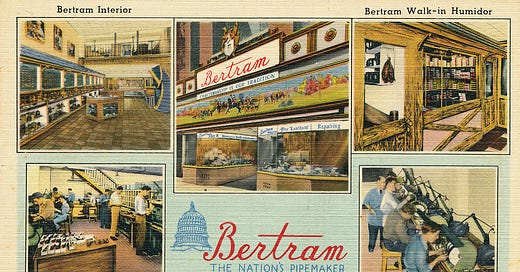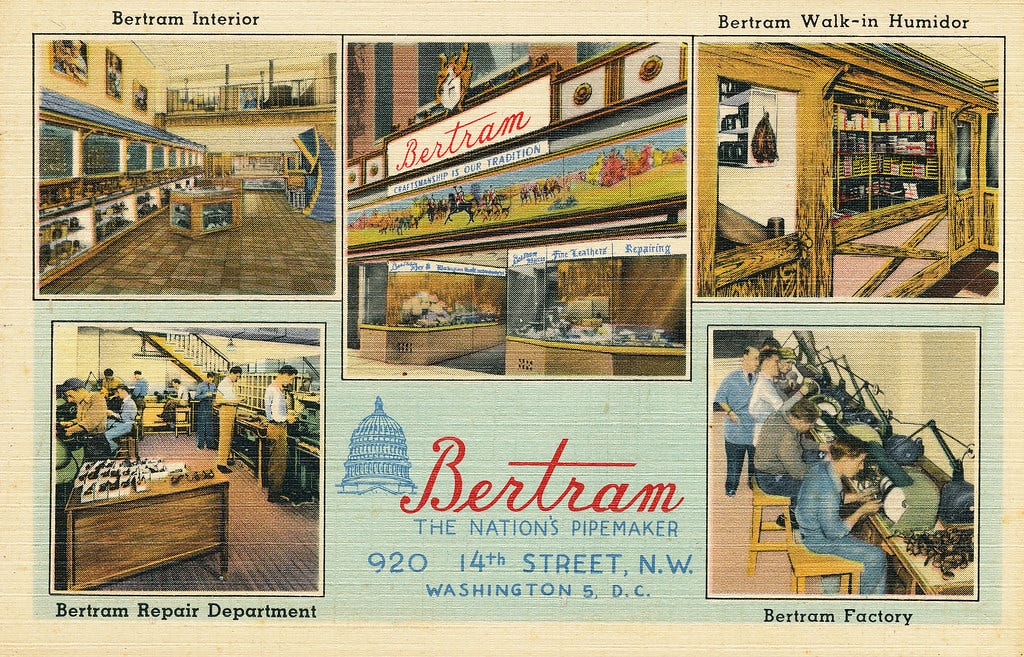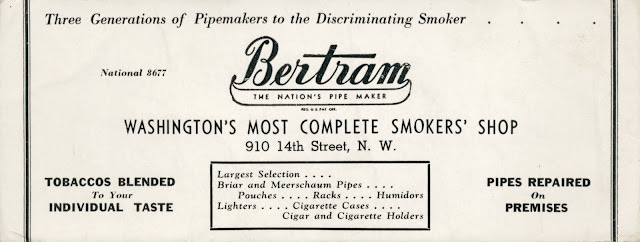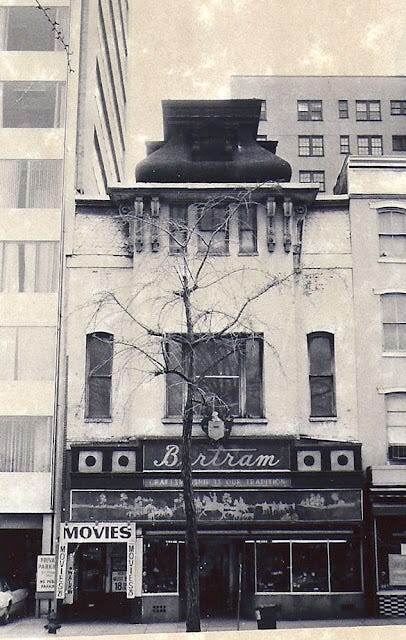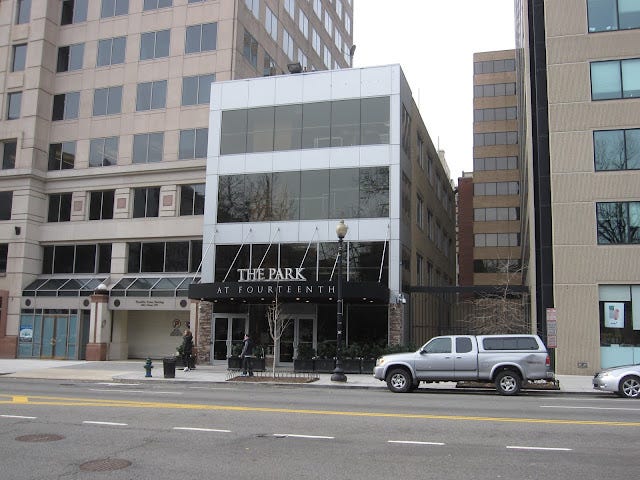Bertram's Pipe Shop on 14th Street
The art of making a really good pipe seems to have died out, and many would say that's a good thing. But if we set aside the health and social issues for a moment, we discover a business that once relied on skilled artisans to make its very finest products. In Washington, D.C., the very best pipes were made by Bertram's on 14th Street, opposite Franklin Park, and it seems like almost every famous world leader from the early 20th century who smoked had his pipe made there.
Benjamin Bertram Goldmann was born in Leipzig, Germany, some time in the late 1870s, the son of a master pipe maker who passed the exacting craft on to his son. Bertram emigrated to the United States and had a pipe shop first in Baltimore but then moved to D.C., where he settled on 14th Street early in the 1900s. A Washington Post reporter visited the old man in his shop in 1933 and found him muttering about all the bad things that pipe owners and other pipe makers do to their pipes. Beyond not scrupulously caring for a good pipe, anyone who would paint or varnish the outside of a pipe was essentially committing a crime against humanity, according to Bertram. His pipes were handcrafted from carefully selected pieces of briar root imported from Algeria. Only the pieces with the grain just-so were acceptable. Beyond the briar pipe bowls, Bertram used amber, Bakelite, and bands of silver and gold. The pipe bowls were a light, blond color when new and would darken to a rich shade of mahogany as time went by. These pipes were veritable works of art.
A blotter card advertising Bertram's (author's collection).
Bertram passed the business on to his son, Sydney Bertram Goldman (c. 1904-1960), who ran the store during its peak years. The shop sold President Franklin Delano Roosevelt his famous goose-quill cigarette holders. It also sold only the best pipe tobacco and cigars. When Winston Churchill was in town he bought his fine Romeo y Julieta cigars, made in Havana, from Bertram's. They sold for a dollar apiece at the time. According to the Post, Bertram's also supplied Joseph Stalin with its best Capitol Blend pipe tobacco via the Soviet Embassy. General Douglas MacArthur's iconic corncob pipes came from Bertram's. Entertainers such as Edward G. Robinson and Red Skelton were also customers.
The store moved a few doors up to 920 14th Street NW in 1947. The new building was festooned with a rather eccentric carved glass frieze of a hunting scene on its facade. When the new place opened, Sydney Goldman, who had served in the Marines during the war, made a point of hiring 49 disabled veterans to work in the pipe-making shop.
The Bertram's Shop in 1974 (photo by Steve Strack).
The store began to decline in the 1960s after the death of Sydney Goldman. His widow, Mae Goldman continued to run the business, but the neighborhood was becoming increasingly seedy. The business was becoming more difficult as well: Cuban cigars, of course, were no longer available, and Algerian briar was becoming increasingly difficult to obtain. In September 1966, when burglars entered the shop through a skylight and made off with $25, Bertram's responded by installing a metal sheet over the skylight. As if offended by this rebuke, the burglars returned a week later, pried away the metal, and this time made off with almost $4,000 worth of cigarette and pipe lighters, hunting knives, and amber figurines. According to some reports, the Bertram's pipe factory was also ransacked and set on fire during the riots of April 1968.
The location of the former Bertram's store (Photo by the author).
By the 1970s, Bertram's was surrounded by peep shows and porn palaces. Finally in September 1977, Mae Goldman decided to close the business, selling the building to Rodman's for use as a discount liquor store. In a neighborhood of deadeningly uniform office buildings, the site of the former Bertram's store, now transformed to match, stands out for its unusually low scale.
Special thanks to Jerry McCoy, who of course had a copy of the Bertram's postcard before I did and who first publicized this little known Washington institution. Thanks also to Steve Strack for the photo of Bertram's in 1974.

